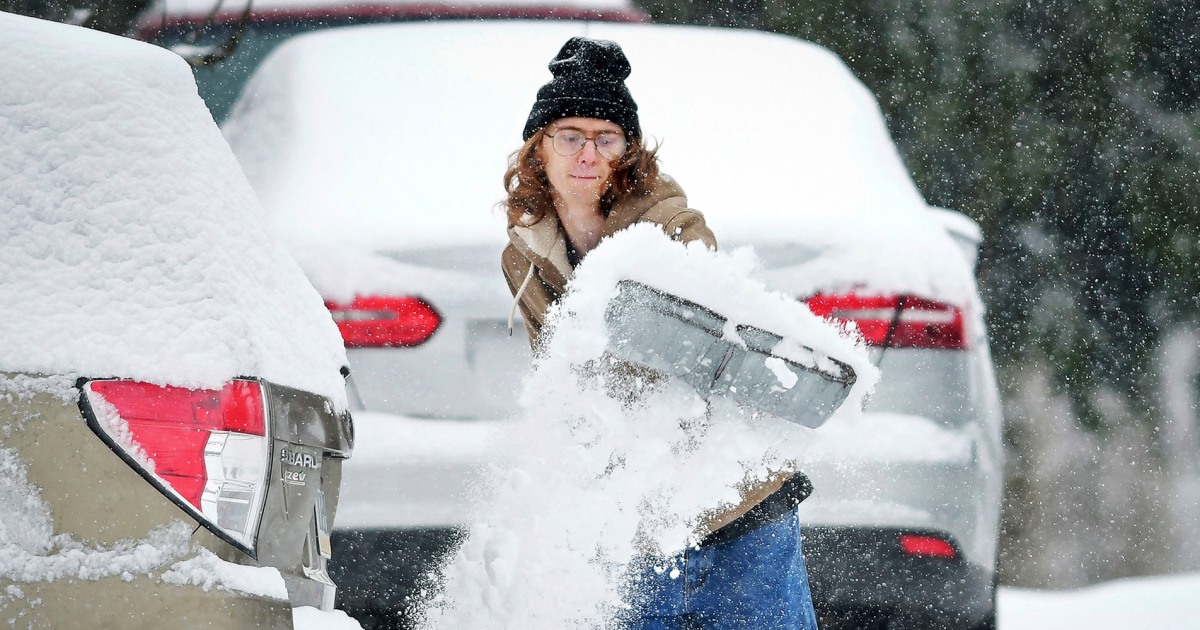Winter’s Wrath: A Deep Freeze and Dangerous Ice
As winter settles in across the United States, an imminent wave of severe winter storms is poised to unleash a powerful mix of heavy snowfall and dangerous ice conditions, impacting nearly two-thirds of the nation. This weather phenomenon, often referred to as “Winter’s Wrath,” is expected to bring not just frigid temperatures but also significant disruptions to daily life. Residents are urged to prepare for hazardous travel and potential power outages as this cold front approaches.
Understanding the Winter Storm Threat
Winter storms are characterized by a combination of ice, snow, and freezing rain, creating conditions that can be both beautiful and perilous. The current weather patterns suggest that a potent winter storm is developing, fueled by a clash of warm and cold air masses. Meteorologists indicate that the storm will begin in the Northwest and sweep southeastward, impacting states from the Rockies to the Midwest and beyond.
Winter’s wrath is not just about the snowflakes falling from the sky; it’s the ice that tends to create the most hazardous conditions. Ice accumulation on roads can lead to treacherous driving conditions, and the weight of ice on trees and power lines often results in dangerous power outages. In addition to the immediate dangers posed to travelers and residents, the aftermath of such storms can linger, causing disruptions in essential services.
Preparing for the Deep Freeze
Preparation is key when facing winter’s wrath. Here are several steps individuals and families can take to ensure safety during severe winter storms:
- Stay Informed: Keep an eye on local weather forecasts and alerts. The National Weather Service (NWS) provides timely updates on impending storms and offers guidance on safety measures.
- Emergency Kit: Prepare an emergency kit that includes non-perishable food, water, a flashlight, batteries, and first-aid supplies. Don’t forget medications and important documents.
- Vehicle Preparedness: Ensure your vehicle is winter-ready. This means checking the battery, tires, and fluid levels. Keep an emergency kit in your car, including blankets, food, and a shovel.
- Home Safety: Insulate pipes to prevent freezing and check your heating system. Have a backup heating source, like a space heater or fireplace, ready to use safely.
- Travel Wisely: If travel is necessary, make sure to inform someone of your route and expected arrival time. Avoid traveling during the worst conditions if possible.
The Impact of Ice on Infrastructure
The primary concern with ice storms is the potential for widespread damage to infrastructure. Ice accumulation can weigh down power lines and trees, leading to outages that affect thousands of homes and businesses. According to the National Weather Service, just a quarter-inch of ice can lead to significant damage, while an inch of ice can bring down trees and power lines across entire neighborhoods.
Power outages during winter storms can pose serious risks, particularly to vulnerable populations such as the elderly or those with medical conditions that require electricity. In these situations, community resources become critical. Local shelters and warming centers may open to provide refuge for those without heat, and it’s essential for communities to have a plan in place to support those in need.
Traveling During Winter’s Wrath
Traveling during severe winter storms can be extremely hazardous. The combination of snow, sleet, and ice creates slippery roads, reducing visibility and making driving treacherous. Here are some tips for safe travel during these conditions:
- Check Road Conditions: Before heading out, check local road conditions and closures. Websites and apps that provide real-time traffic updates can be invaluable.
- Drive Slowly: If you must travel, reduce your speed. Give yourself plenty of distance between your vehicle and others on the road to allow for longer stopping distances.
- Avoid Sudden Movements: Be gentle with the steering wheel and brakes to prevent skidding. If you start to slide, steer into the direction of the skid.
- Have an Emergency Plan: In case you get stranded, carry extra blankets, snacks, and water in your vehicle. Always keep your phone charged and have a portable charger handy.
Community Response and Resilience
Communities play a pivotal role in responding to winter storms and their aftermath. Local governments, emergency services, and volunteer organizations often coordinate efforts to ensure public safety. Here are some ways communities can prepare:
- Emergency Services Training: Emergency responders should conduct regular training exercises to prepare for winter weather emergencies. This includes snow and ice rescues and effective communication strategies.
- Community Outreach: Engaging with residents to share information about winter preparedness can enhance community resilience. Programs that educate citizens about emergency plans and resources can save lives.
- Infrastructure Maintenance: Local governments should prioritize maintenance of roads and public spaces, including salting, sanding, and snow removal, to keep communities safe during and after storms.
Finding the Silver Lining
While winter’s wrath brings challenges, it also offers an opportunity for communities to come together. Neighbors can assist one another, whether by clearing driveways, sharing resources, or simply checking in on those who may be isolated by the weather. It can be a time to reflect on the importance of community support and resilience in the face of adversity.
Moreover, winter storms can also bring a unique beauty to the landscape. The serene sight of snow-covered trees and glistening ice can transform the world into a winter wonderland, reminding us of nature’s awe-inspiring power.
Conclusion
As we brace for the impending winter storms and prepare for winter’s wrath, it’s crucial to prioritize safety and community preparedness. By staying informed, taking proactive measures, and supporting one another, we can navigate through the challenges posed by deep freezes and dangerous ice. With the right preparation and a spirit of resilience, we can weather the storm and emerge stronger on the other side.
See more Your Daily Weather



